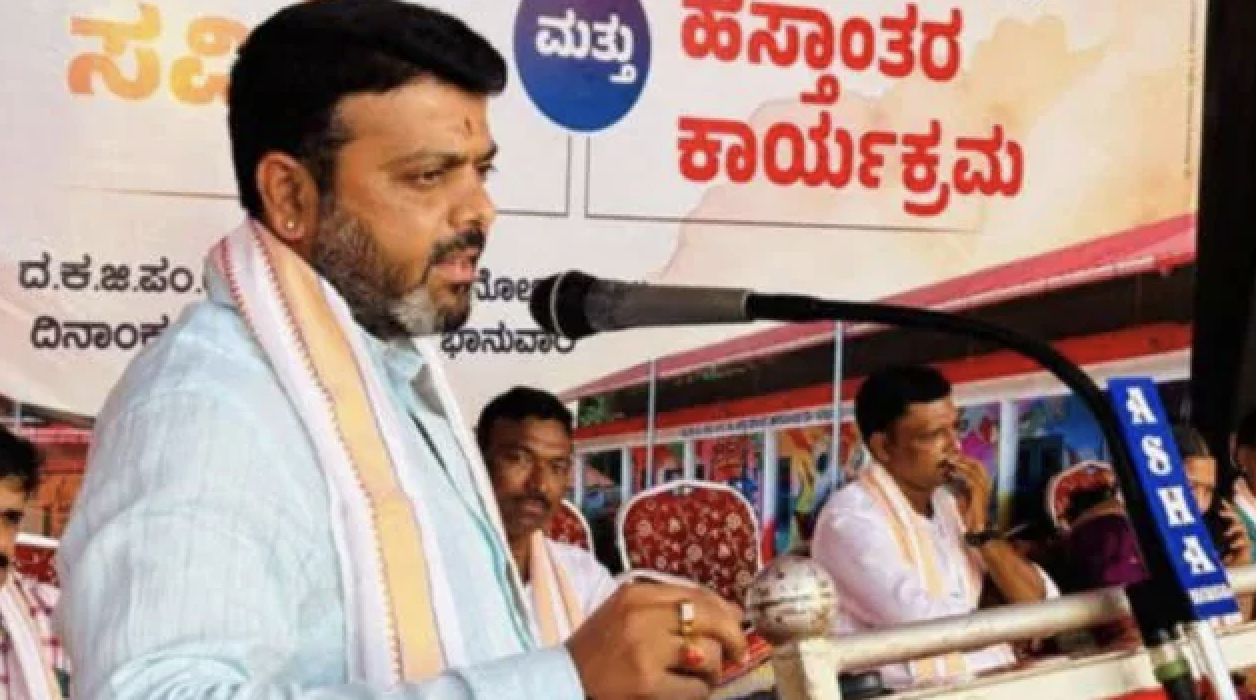
Does India matter? The answer of Western media seems to be: hardly. Measured against population (one in almost five humans lives in India), history, land mass, geopolitical ambitions and growing economic importance, one would expect at least reasonable coverage of developments in India. But that remains absent. Hence the lack of knowledge and understanding in the West. The lack of Western recognition then translates into resentment in India. It feeds into an already powerful Hindu-nationalism that would love to resuscitate a mythological past preceding the conquests by Muslim Mughals or the British East India Company.
The current government of Narendra Modi has often been described as one of a kind with Trump’s America First or Erdogan’s neo-Ottoman regime in Turkey. What they share is not only a staunch and often ethnic or cultural nationalism and a broad populist appeal – those traits are often cited – but also a deep belief in neoliberal capitalism as the motor for their national growth and development. That second trait is often overlooked, even if it is crucial to explain some of the contradictions in today’s new nationalist policies.
Lourens Van Haaften and Aditi Athreya, two PhD researchers from the KU Leuven, are very much aware of those contradictions and tensions. Their analysis of India’s New Education Policy looks both at the Hindutva-agenda of the Modi-government, it’s need to be perceived as anti-Western and it’s acute awareness of the persisting dominance of the (Anglo-Saxon) West in terms of science, knowledge and education. That makes their contribution much more than the analysis of a 484-pages policy document. It provides insight in the search for the future soul of India. Reading this will fill in much of what you miss in mainstream media.
Modi’s new education policy
On 30th July, the Modi government presented and approved the new National Education Policy (NEP) that announced an ambitious and rigorous reform of India’s education system. The policy aims‘to lay the foundation of a new India of the 21st century’ and to make India ‘future ready’, as Modi later declared. This first, full-fledged policy make-over in over thirty years potentially forms a milestone in transforming the Indian society, and is therefore permeated with political questions.
Some had concerns that the new education policy would be used by the BJP government to further their Hindu nationalist agenda. Since Modi’s re-election with an absolute majority in the Lok Sabha in 2019, the BJP has adopted a number of key laws delivering on the electoral promises. Is the NEP the next step in this saffronisation of India?
India’s first education policy make-over in thirty years
The NEP is the first rigorous make-over of India’s educational policy since 1986, barring a few modifications in 1992 and the adaptation of the Right of Education Act in 2005. A new policy for education was already one of BJP’s promises during the 2014 elections. There was broad consensus that India needed a new framework to address the many challenges and problems in its educational system.
In 2017, the government appointed a committee under the chairmanship of the space scientist Kasturirangan to constitute a first draft policy. The committee presented its results in May 2019, followed by further consultation with diverse organizations, experts and political actors. This first version received considerable criticism in public debates, especially for its Hindu nationalist undertone.
The final, 484-page policy document was presented on 29 July and passed by the Modi government, without deliberation in either houses of parliament. It sets an ambitious agenda for reform on all levels: primary, secondary and higher education. It commits to allocate 6% of the GDP instead of the current 3% to education. To make India a competitive knowledge society, it aims to increase the enrolment ratio from 26,8 percent in higher education to 50 percent by 2035. The policy also announced a sea of changes, such as a new curricular structure for primary schooling, more flexibility in examinations, a merging of regulatory agencies, an increase in digital learning and much more.
Education as a target for the saffronisation of India
Critics of the government were concerned that the BJP would use the NEP as tool to spread a Hindu nationalistic agenda – and not entirely without reason. In recent years the BJP has interfered at several moments in the educational sphere, by adapting curricula and rewriting textbooks, for example in the field of history. The Rashtriya Swayamsevak Sangh (RSS), the Hindu-right-wing root organization and the main ideological provider for the BJP, holds the view that education in India needs to be further de-westernized and sees education as a pivotal instrument in character building and raising cultural consciousness in the country.
The concerns were further wired by the political developments in India in the past two years. Since 2019, the BJP administration took several controversial decisions in its pursuit of constituting India as a strong Hindu nation. It revoked an article in the constitution that provided Jammu and Kashmir a high degree of autonomy, followed by further militarization of the Kashmir valley. The government adopted a citizenship act that identifies citizens on the basis of their religion, and of which opponents argue that it relegates Muslims and Christians to second-class status. In August 2020, PM Modi and other BJP ministers attended the foundation ceremony of the Ram Temple in Ayodhya, a raging issue which led to the illegal destruction of the Babri mosque by supporters of the RSS and other right wing organizations and anti- Muslim riots, killing many.’
Modeling higher education at India’s glorious past
The NEP unmistakably draws from the current Hindu-nationalistic discourse in Indian politics. For instance, the rigorous plan to restructure the higher educational system is presented as bringing India back to its cultural and epistemic roots. Over the years, India’s educational landscape has grown into a diverse and complex environment, consisting of government and state universities and affiliated colleges, but also many specialized education institutes. Since India’s ‘liberal turn’, in the early nineties, also private institutes mushroomed. This diversity creates many challenges as it is difficult to regulate and to guarantee minimum standards. The neoliberalisation of education is furthermore critiqued for creating a culture of commodification of education, as degrees and diplomas are mainly valued as instrumental for social mobility.
To overcome the fragmented character of the system, the NEP presented a new model for higher education that puts a strong emphasis on “multidisciplinary and holistic learning”. The policy envisions all higher education institutes at undergraduate level to became multi-disciplinary by 2040. This new educational model is linked to the ancient and renowned universities of Nalanda and Takshashila – often referred to as the world’s first universities that attracted scholars from all corners of the world. Taking these ancient knowledge centers as inspiration for India’s higher education of the 21st century brings in a strong symbolic capital that satisfies the Hindu-nationalist section of the political spectrum, as these institutes symbolize India’s knowledge and wisdom before it was subjected to Muslim and British rule.
But what is presented as de-westernization of Indian universities can at the same time be interpreted as a further adaption of the liberal arts model of undergraduate schooling as is practiced at the American Ivy-League colleges, as several commentators in the public debate observed. The orientation and entanglement with the American educational system has grown in the past years. To illustrate, almost two-hundred thousand Indian students go every year to study at an American university for a post-graduate training or masters. The NEP seeks to develop an educational system that supports India in becoming a global economic super power. It therefor seeks further connection to an increasingly internationalized space of higher education.
NEP and the politics of language
A second major issue in the NEP concerns the politics of language. India being home to a diverse set of languages has been unable to find common ground on the issue of language instruction in schools. The NEP 2020 will continue the so-called three language policy, which was first introduced in 1968, but also introduces some minor changes. The 1968 three language policy stipulated that all students learn Hindi, English and a third language. During this period, individual states had the autonomy to decide whether to implement this policy and several states like Tamil Nadu with a history of anti-Hindi and anti-Brahmin movements did not make Hindi a compulsory language and pursued a two-language policy.
The draft NEP of 2019 was a reiteration of the 1968 policy where it referred to mandatory teaching of Hindi in non-Hindi speaking states. While it also proposed that Hindi-speaking states introduce another modern Indian language (preferably from the southern states), the goal was to establish Hindi as the link language between various states.
However, after significant backlash from several states, the revised policy of 2020 pushes away from the English-Hindi approach and provides the state with the autonomy of selecting languages it deems fit for the children to learn. To quote Kasturiranjan, ‘No individual or specific language will be imposed on any state, if the state does not want it.’
While this is certainly a welcome move, India’s obsession with Hindi and the consequent anti-Hindi discourse cannot be ignored. Even though Hindi is a relatively young language, its political life has been upper caste and Sanskritic, and is as such propagated by the RSS. It was as early as 1937 that Tamil Nadu has opposed making Hindi a compulsory language in schools citing a threat to the Dravidian culture and languages like Tamil, Malayalam, Telugu and Kannada which do not trace their roots to Sanskrit.
The proposed change of the role of English has also attracted some criticism. The NEP delays the learning of English till class 8 (age 13) to provide more emphasis on instruction in the mother tongue. This delay also relates to the fact that English is still viewed as an imperial language: doing away with it is one of the ways to de-westernise Indian education. While some have welcomed this move, others point out that the reduced importance of English in schools will pose an obstacle in reducing inequity arising from language instruction as it is seen as a way of climbing the social order. As higher education instructions are almost always in English, students in India are expected to profess fluency in English by the time they enroll in university.
Finally, the policy also places a considerable emphasis on mainstreaming Sanskrit, the ancient language known for its rich body of classical literature, and aims to offer the language at all levels. The Modi administration has already earlier demonstrated its sympathy with Sanskrit by spending twenty two times more the amount promoting the language and establishing centers of excellence than it has spent promoting the five other thriving classical languages, Tamil, Odiya, Malayalam, Telugu and Kannada. This decision has also been critiqued.
Historically, Sanskrit has been accessible only to the upper castes of the Indian society notably the Brahmins, and hence was never a language of the masses. Secondly, by prioritizing Sanskrit, the NEP risks alienating Muslims and Christians, India’s oppressed castes and the peoples of the North East who trace their history to different origins as the evolution of the language has been increasingly dictated by the Brahmins. The North-East Forum for International Solidarity (NEFIS) reacted to the NEP by stating that “the study of Sanskrit highlight the utter insensitivity towards other languages” and that it is an attempt by the centre to impose a single identity on the various peoples of India.
A political comprise building on a human capital approach
One cannot ignore the lip services the policy makes to Hindu nationalistic ideas. The RSS for instance expressed satisfaction that all its recommendations were taken into account. This reflects in the clause on the language policy and the Hindutva undertone used in the policy.
But despite these elements, the general consensus in the media and among leaders of the opposition is that the NEP is not the next leap forward towards saffronising India. This is in itself a newsworthy observation, considering the fierce commitment to the Hindutva agenda that this government showed in the past two years. Instead, the policy reads as a cautious compromise that navigates between different ideological positions and reconciles diverging objectives. The most important rationale is to make India a globally competitive economic superpower and therefore the policy is firmly built on a human capital approach in education, with a neoliberal undercurrent. The NEP shows something about the complex political reality in today’s India, where saffronisation is only one of the several developments that dominate the agenda.
This story first appeared on mo.be






